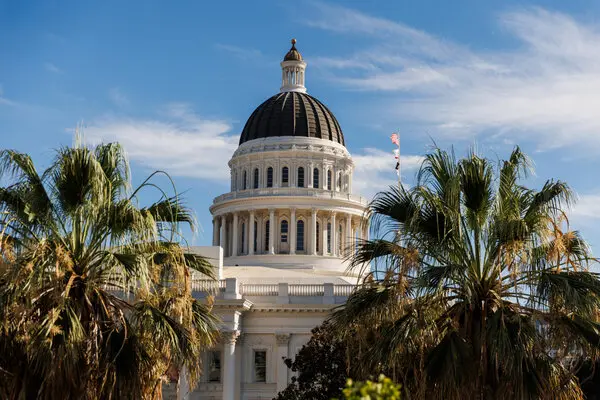
California’s governor, Gavin Newsom, has announced a series of legislative actions aimed at countering anticipated environmental policy rollbacks under President-elect Donald Trump. Newsom’s move highlights the growing tension between federal and state governments as California seeks to preserve its ambitious climate goals and environmental standards. With Trump’s expected deregulation efforts, California environmental legislation stands at the forefront of the state’s proactive measures to protect its natural resources, air quality, and climate commitments.
California’s Environmental Vision
For years, California has led the nation in progressive environmental policy. As a state with one of the largest economies in the world, it has implemented extensive initiatives aimed at reducing carbon emissions, advancing renewable energy, and promoting sustainable practices. These policies have served as a model for other states and even countries, particularly regarding clean energy and emissions standards. California environmental legislation reflects a commitment to the Paris Climate Agreement goals, which the federal government may now abandon or scale back significantly under new leadership.
Anticipated Federal Rollbacks Under Trump
President-elect Trump has indicated a desire to reverse numerous environmental regulations, including those related to clean air, water, and climate change. His administration’s agenda likely includes supporting fossil fuel industries, reducing environmental restrictions for corporations, and withdrawing from international climate agreements. For California, these anticipated federal changes threaten to undermine years of environmental progress. This divergence is particularly acute in areas such as automotive emissions, where California has held stringent standards that exceed federal requirements.
Newsom’s Legislative Countermeasures
Governor Newsom’s proactive strategy includes drafting new legislation designed to maintain California’s environmental protections despite federal shifts. By setting up legal barriers and state-specific standards, California aims to preserve its autonomy in climate action. The proposed laws will likely focus on safeguarding air quality regulations, protecting endangered species, and sustaining renewable energy incentives. These legislative efforts are poised to reinforce California’s standing as an environmental leader, while also setting an example for other states that prioritize green policies.
Key Areas of Focus in California Environmental Legislation
- Renewable Energy Standards
California’s focus on renewable energy has accelerated under state mandates that promote solar, wind, and other clean energy sources. The state has a renewable portfolio standard that requires utilities to source a certain percentage of energy from renewable sources, aiming for 100% clean energy by 2045. Newsom’s administration plans to reinforce these standards with legislation that would prevent federal policies from hampering California’s renewable energy transition. - Automotive Emissions
Automotive emissions standards are another focal point for California’s legislative response. California environmental legislation has long mandated stricter emissions standards for vehicles sold within the state. Newsom’s office has expressed intentions to safeguard these standards, even if federal rollbacks attempt to ease restrictions for automakers. By preserving stringent standards, California can continue reducing greenhouse gas emissions from one of its largest pollution sources. - Wildlife and Habitat Protection
Given California’s unique ecosystems, the state has vested interest in protecting its biodiversity from potential regulatory relaxation. Trump’s administration may loosen restrictions under the Endangered Species Act, posing risks to species unique to California’s environment. Newsom’s administration is expected to propose state-specific protections to maintain critical habitat conservation efforts that federal policy may no longer uphold. - Water Quality and Conservation
Water policy is a particularly sensitive issue in California, where droughts are frequent, and water resources are heavily regulated. State authorities are concerned that federal changes could lower water quality standards, risking contamination and affecting agriculture. Newsom’s team plans to bolster state-level water regulations to prevent potential rollbacks from impacting California’s water security and environmental quality. - Climate Resilience and Adaptation
As climate change continues to affect California with record-breaking wildfires and extreme weather, the state has intensified its focus on resilience and adaptation. Newsom’s administration aims to secure legislative support for climate adaptation initiatives, such as fire prevention, water conservation, and infrastructure improvements. The governor’s plan includes funding and regulatory measures to build climate resilience, even in the face of reduced federal support for these areas.
The Legal and Political Battle Ahead
California’s legal strategy could involve challenging federal policy changes in court, as the state has done in the past with issues such as vehicle emissions standards. This approach would build on the legal precedent California has established by asserting its right to exceed federal environmental standards. Newsom’s administration may also collaborate with other states that share similar environmental goals, forming coalitions to collectively resist federal rollbacks.
California as a Model for State-Led Environmental Protection
California environmental legislation may inspire other states to follow suit, creating a decentralized resistance to federal environmental deregulation. States with similar environmental priorities could adopt parallel policies, creating a multi-state front that maintains rigorous climate and environmental standards. This approach would not only mitigate federal deregulation impacts but also establish a template for state-led climate action across the U.S.
The Future of Environmental Policy in the U.S.
The standoff between California and the federal government underscores the broader debate over the balance of power in environmental policy. With California’s steadfast commitment to climate action, the state may lead a new era of state-driven environmental protection, independent of federal influence. This trend could reshape the environmental policy landscape in the U.S., with states increasingly taking matters into their own hands to address climate change and environmental conservation.
Conclusion
Governor Gavin Newsom’s plan for new legislation reflects California’s enduring commitment to environmental leadership. By proactively countering anticipated federal rollbacks, California is setting a bold example of resilience in environmental policy. As federal policies shift, California environmental legislation may prove to be a vital safeguard for green progress, reinforcing the state’s role as a trailblazer in sustainable governance.


